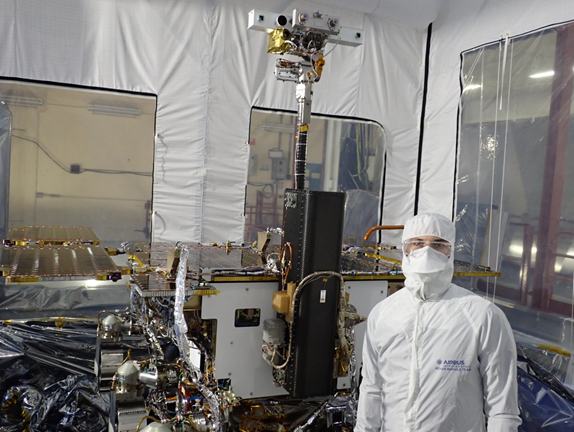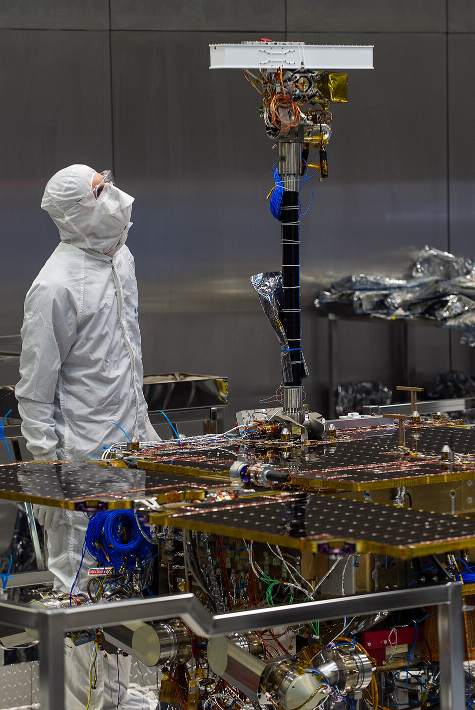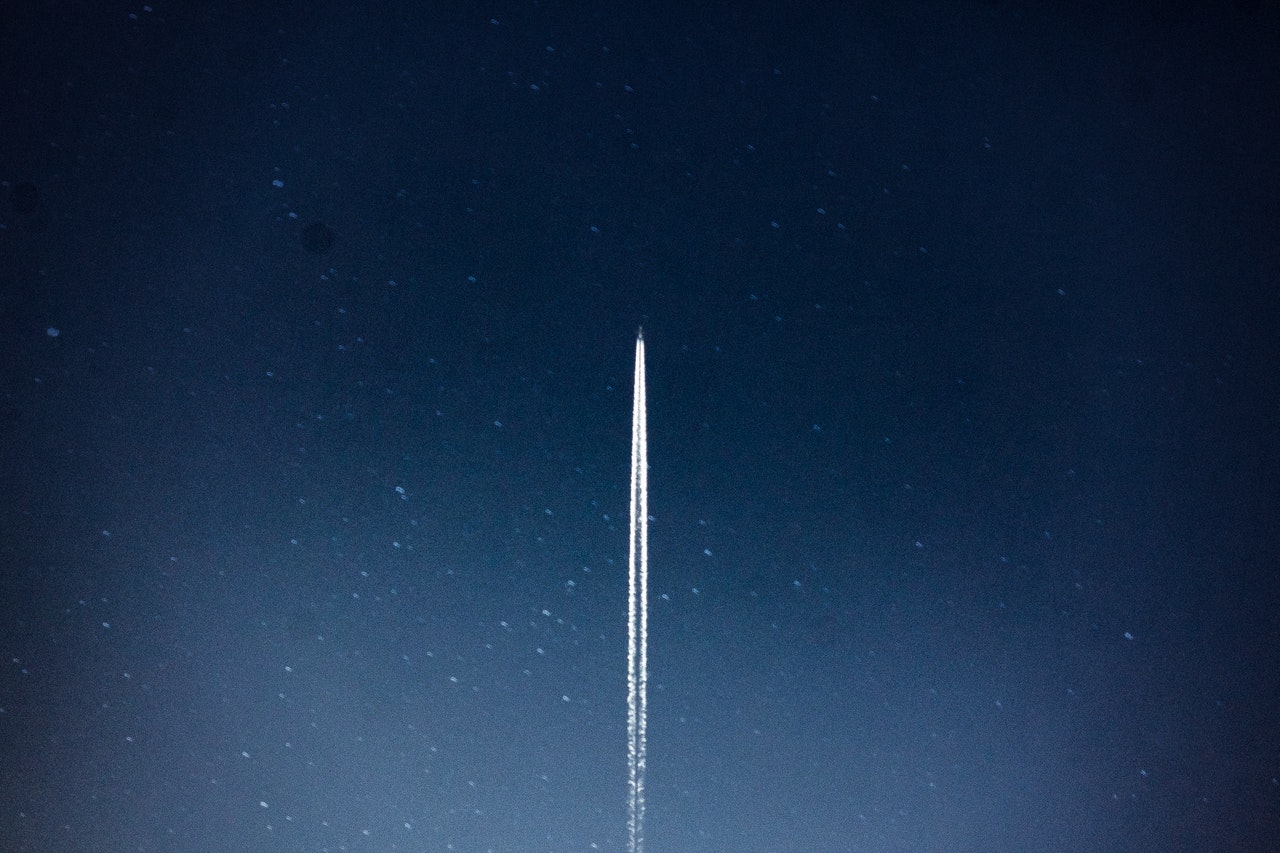In the twenty-first century, ‘outer space’ feels very close. We have seen icy volcanoes on Enceladus, probes landing on comets and rovers exploring Mars. Space missions have pushed humans’ boundaries beyond Earth and given us an increased sense of connection to celestial environments.
However, history shows us that when exploring other worlds, biology always comes with troubles. The Black Death that ravaged Europe in the 1300s was caused by a bacterium carried by fleas, fifteenth-century explorers transmitted European diseases such as smallpox and measles that devastated communities in the New World, and insects carry pathogens such as Xylella fastidiosa, which has become closely associated with the death of olive trees.
Planetary protection is the discipline of promoting the sustainable and responsible exploration of space by tackling the potential transfer of biological matter to and from Earth and other objects in the Solar System. Although conditions on other planets and bodies in space look inhospitable, ingredients that could host life might be present. If life exists in any of the worlds we hope to explore, conscientious mission teams cannot leave its protection to chance.
We know life is found on Earth in the most extreme conditions and terrestrial hitch-hikers can survive space travel. Mars’s cold, dry and highly-oxidised surface might look sterile but its subsurface is warmer, and recent studies have found evidence of buried lakes of liquid water, the main ingredient needed for life (as we know it) to exist. Vast oceans lie beneath the surface of the icy moons Europa and Enceladus; ideal conditions for the formation of hydrothermal vents like those deep beneath Earth’s oceans that might have harbored the reactions initiating the chemistry of life.
In the past, space exploration missions were mainly managed by national and multi-national space agencies, but commercial companies are playing an increasingly important role. The debate over the ethical, philosophical, governance, legal, scientific and commercial aspects of space exploration must evolve to consider the interests of all stakeholders.
Do stakeholders’ different concerns about contamination mean we should give up exploring special regions or planning adventurous, complex missions? What can we do to reduce the risk of contaminating other worlds? How do we make sure those worlds – and ours – are protected and space missions are conducted safely? How clean does a spacecraft exploring another planet have to be? How do we even measure ‘clean’? How can we ensure samples from Mars are brought safely back to Earth?
These are just a few of the questions that the planetary protection community is trying to answer. The key to success is to fill the gaps in our knowledge and technologies so that stakeholders involved in planning space exploration missions can make informed decisions. This will be an international effort, with contributions from researchers, industry, commercial businesses, space agencies and more. My current work at Astrobiology OU aims to strike the right balance between industry’s need for agile and cost-effective processes for building spacecraft and rovers and scientists’ desires to conduct meaningful, state-of-the-art, astrobiology experiments.

The ExoMars - Rosalind Franklin - Rover during the environmental testing phase at Airbus Toulouse. Strict planetary protection measures have been applied throughout the project to keep biological contamination under acceptable limits. Credit: Airbus
One of our priorities is to develop quicker and more informative procedures to determine levels of contamination at different points during the manufacturing, assembly and testing of flight hardware (the parts that make up spacecraft or rovers that will explore other planets). Building the flight hardware for space missions is a complex scientific and engineering task. Spacecraft are made of many different components and pieces of equipment and from many different materials – metals, polymers, glass fibre, carbon fibre, adhesives, lubricants, greases and more – each with its own function and its own history of cleanliness.
A huge amount of industry’s investment in planetary protection goes towards identifying the ways contamination of spacecraft happens and how it can be contained. For example, a common approach is to isolate critical areas of the spacecraft where cleanliness is vital for mission success, while making sure that sub-systems that have different levels of cleanliness are compatible and can be integrated without risking cross-contamination.
Ensuring every item on a spacecraft is developed to meet sterilisation parameters used in planetary protection might mean every single piece of equipment has to be a brand-new development and spacecraft could use very few off-the-shelf components. This would significantly increase the final cost. On the other hand, designing flight hardware with sterilisation in mind has actually increased the life of spacecraft, leading to greater scientific returns and, ultimately, lower mission costs.

The ExoMars (Rosalind Franklin) Rover being checked during integration activities inside the Bio CleanFacility at Airbus Stevenage (UK). Credit: Airbus
Understanding more about biodiversity on spacecraft and how microbes survive under simulated mission conditions will not only help establish more informative international planetary protection policies but might also allow us to make better compromises among scientific objectives, the integrity of flight hardware and the cost of missions.
The human desire to know more and explore further will always be with us; it is part of what makes us human. The decisions we make now about planetary protection, the tools we develop and the procedures we put in place will determine the kind of missions that future scientists can carry out and the quality of data that they can collect. This is a huge responsibility; we must keep target planets in a condition that will allow future generations to pursue their scientific goals unhindered by mistakes we might make. Does curiosity justify the potentially permanent contamination of other biospheres?
Importantly, this issue involves all of us, not just people working in the space industry, and it raises some fundamental questions. What is the cost of human curiosity? If we find life on another celestial body, are we entitled to interfere with it? What would it mean for human societies if we found a form of life on another world that had evolved in a completely different way to the one we know about?
These are complex questions that do not have simple answers. But they are questions we all can – and should – think about and try to answer.
 This article is part of the Astrobiology Collection on OpenLearn. This collection of free articles, interactives, videos and courses provides insights into research that investigates the possibilities of life beyond the Earth and the ethical and governance implications of this.
This article is part of the Astrobiology Collection on OpenLearn. This collection of free articles, interactives, videos and courses provides insights into research that investigates the possibilities of life beyond the Earth and the ethical and governance implications of this.




Rate and Review
Rate this article
Review this article
Log into OpenLearn to leave reviews and join in the conversation.
Article reviews